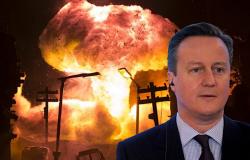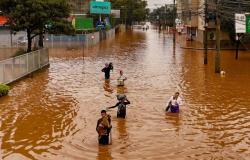The war in Ukraine has long been described as the first drone war, due to the important role drones have played in the fighting.
But in recent months, the weapon has become even more important, due to a shortage of artillery ammunition, and support from the West.
– This has become a robot war on the front line. The Russians and our soldiers dig trenches as deep as possible, and then everyone tries to take each other out, says press officer for the drone group, Dmytro Pelykh.
– Does not replace artillery
In the drone lab at the front, Serghiy picks up one of the civilian drones and shows how he reprograms them to the frequencies Ukraine needs.
This is disposable: A Kamikaze drone crashes right into the Russian positions, taking people and equipment with it in the explosion.
“The Hawk”“Sokil” in Ukrainian was a car mechanic before the invasion. Now he is a drone lab technician
In the video below, he shows how they work:
– We use these drones to hit the Russians where they are hiding. But these weapons do not replace artillery. The best way to use them is to use them together – you stop the advance with artillery, and then we use the drones to clean up, explains Pelykh.
Because even if the drones enable them to effectively monitor and take out Russian positions, they cannot replace what Ukraine lacks.
– We really need artillery ammunition. With that we can attack the Russians while they are preparing to attack deeper behind the front. The more of it we get, the fewer losses we get along the front line – and the less work this group gets to do.
New hope
This week, the US House of Representatives approved a $61 billion aid package for Ukraine – after an internal political dispute that took almost six months to resolve. On Tuesday evening Norwegian time, the package also received a majority in the Senate.
– It gives us optimism and motivates us to fight harder at the front. It also gives faith and hope to the families who are waiting for their soldiers, that more of us will return home, says Pelykh.
He hopes they will soon see results from the support, and adds:
– There was a time when we did not feel that our families were well protected. Fortunately, sobriety and humanity prevailed.
– This is what they are most afraid of
One drone group can use up to 40 drones on a daily basis.
The drones come both from the authorities and from volunteers who collect them and donate them.
– The Russians who have recently been captured say that what they are most afraid of are these drones, says the “Student” (36) – who manufactures ammunition.

He shows off the various bombs that are both dropped from the drones, or used in Kamikaze attacks.
– This does not make any sound when released. That is why the Russians are afraid of them, he says.
At night, the Russians try to get to trenches closer to Ukraine’s positions. During the day, the Ukrainians destroy the trenches and what is in them.
But the lack of ammunition has also meant that they have to prioritize which targets to attack with what they have left.
A few kilometers away from the drone lab, in a forest clearing hidden from Russian drones, a group of artillery soldiers is standing and preparing for an attack against the Russian positions.

Must ration the ammunition
“Oscar” (22) leads the squad. He says it has had less to do in the last five months.
– Before, if we received information about a gathering of enemy infantry or equipment and vehicles, we could attack. Now we try to only use ammunition against priority targets.
Before the turn of the year, they could use from 80 to 120 artillery shells during a day. Now they use around 20.

Both the infantry and the drone group say that the Russians have changed tactics:
In the past, they more often gathered large amounts of soldiers and equipment before advancing towards the front.
But Ukraine’s FPV drones see it – giving them little time to gather so much in one place.
“Meat Attack”
Now the Russians are spreading out, making their way to the front in everything from small pickup trucks to golf carts and motorcycles.
Pelykh calls it a “meat” attack. Now they attack with less “meat”, he says, and explains the term:
– The Russian commanders give the soldiers a one-way ticket to the front, without explaining it to them. These are open areas, everything is visible to the drones and they are easy targets. They don’t have a proper evacuation tactic at all.
If a Russian soldier is wounded, he is most likely dead, they say.
According to calculations made by the Norwegian Armed Forces in January, close to 100,000 Ukrainian soldiers were killed or seriously injured in the war, compared to 180,000 Russian ones. The figures are uncertain, and British intelligence concluded in March that Russia has lost 355,000 soldiers.

– On a daily basis, they have up to three attempts to attack. It was in February that they started using golf carts and motorbikes – when they saw that it worked, they started using it more.
– Won’t they be more vulnerable on a motorcycle?
– When they use this tactic, they are more exposed, but they are also more spread out. Doing it this way also allows them to attack with fewer.
Ukraine needs even more support, they emphasize. Russia is now pressing Ukraine hard.
They have also stepped up attacks against civilian infrastructure, which Ukraine lacks air defenses to defend.
NATO countries have promised more ammunition and air defenses, but have been criticized for working too slowly.
– We will still do our job, no matter what kind of support we get. And the need for that job is increasing, says dronelab technician “Hauken”.













